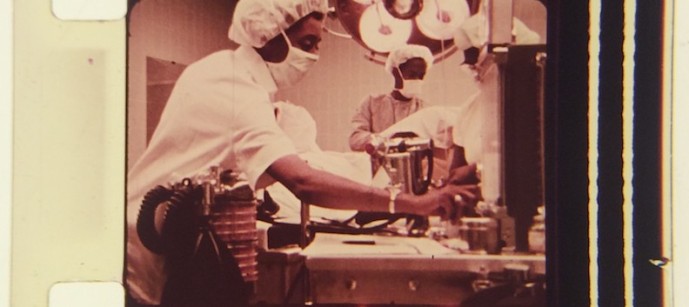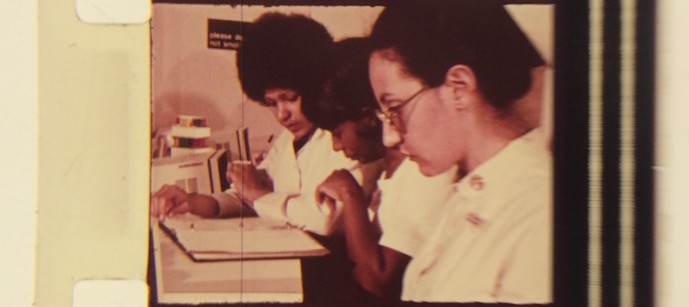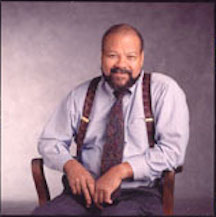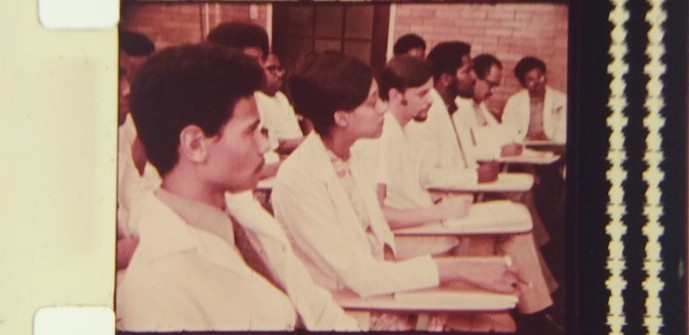Pioneering Healthcare Recruitment Film Preserved
n
The Washington University Libraries’ Film & Media Archive will preserve Code Blue, a 1972 recruitment film aimed at bringing minorities into the medical profession, thanks to a grant in this year’s round of Basic Preservation Grants from the National Film Preservation Foundation.
n
The Washington U Archive was among 36 institutions selected for one of the grants, earlier this month [June 2017].
Code Blue is one of the earliest existing films created by Henry Hampton’s Boston-based documentary company Blackside Inc., which produced the Emmy Award-winning civil-rights series Eyes on the Prize. Blackside became the largest African American-owned film production company of its time and was home to many filmmakers from diverse backgrounds, including African Americans, immigrants, and women.
The Archive’s curator, Brian Woodman, says he and his colleagues chose to apply for restoration of Code Blue “because it is the first complete film we have that was produced by Blackside. Previous to this, Hampton/Blackside had been doing PSAs, etc. As a result, this was Blackside’s first ‘real’ film, and the first to get them (inter)national notoriety.”
Hampton (1940-98) was a St. Louis native and 1961 graduate of Washington University. Blackside, founded in 1968, dedicated itself to documenting civil-rights and social-justice stories with an emphasis on the poor and disenfranchised. The Henry Hampton Collection is housed at the Washington U’s Film & Media Archive.
n
The idea for Code Blue began with Dr. Therman E. Evans, who wanted to encourage African Americans to enter the health professions. Evans approached the Blackside team about making a film about medicine that would appeal to youths. The 27-minute documentary, which was directed by cinematographer and co-editor Romas Slezas and producer and co-editor Howard Dammond, includes footage from an emergency room in Harlem, a tour through areas of Nashville with a doctor who did outreach to poor families, and discussions with young men and women from different backgrounds who could explain the value of medical education.
Code Blue helped to bring new talent into the medical field and was used in hundreds of high schools and medical training curricula nationwide for over 20 years. The film won a CINE Golden Eagle Award and was seen around the world, including at film festivals as far away as Venice’s Festival dei Popoli. It also helped to establish Blackside as a vital player in independent film production.
Decades after its release, Eyes on the Prize is still considered the definitive work on the civil rights movement. The Boston Globe praised the series as “one of the most distinguished documentary series in the history of broadcasting.”
Hampton’s other documentaries include The Great Depression (1993), Malcolm X: Make It Plain (1994), America’s War on Poverty (1995), Breakthrough: The Changing Face of Science in America (1997), I’ll Make Me a World: A Century of African-American Arts (1998), Hopes on the Horizon (1999), and This Far by Faith (2003). Hampton and Blackside garnered many awards over the years including a Peabody Award in Excellence in broadcast journalism, and episodes of Eyes on the Prize were nominated for an Academy Award and received two Emmy Awards. Beyond the civil-rights movement, Hampton’s documentaries cover social-justice issues, Africa, poverty, religion, and African-Americans in the arts and science.
The 35,000-plus items in the Henry Hampton Collection include insightful filmed interviews with key figures in the civil-rights movement. As is true for most film productions, the outtakes often comprise the bulk of the material, and these interviews represent a vast resource. The digital projects, Eyes on the Prize: The Complete Interviews and The Great Depression Interviews, make the content of these interviews available to scholars, researchers and historians. Other material includes rare stock footage, photographs, scripts, storyboards, producers’ notes, correspondence, film-production elements, study guides, books, and other materials. The Hampton Collection’s materials provide a rich resource for anyone interested in the process of filmmaking and the wide subject matter Hampton delved into.
As for the Code Blue restoration, Brian Woodman provides these technical specs: The source material for the film’s preservation is approximately 900 feet of 16mm acetate, Fuji color composite print stock with a variable-area optical soundtrack. The film has a shrinkage reading of .35% and exhibits a degree of magenta fading.
For the restoration work, the Archive will use Colorlab, the renowned full-service film lab based in Rockville, MD. Due to the magenta fading, says Woodman, Colorlab has recommended a DI workflow that will scan the film at 2K, at which point the film will undergo full color and density correction before being output as a 16mm Color Internegative and a 16mm Color Sound Answer Print. The audio from the film will be preserved on full-coat 16mm magnetic stock, as well as a 16mm negative optical track. As part of this workflow, the film will be output digitally at 2K and as a 10-bit Uncompressed HD file, from which VITAC, the largest closed-captioning company in the U.S., will generate closed captioned files and DVD access copies to ensure online accessibility.
— MIAN/press release
Previous Post: Life in a Wisconsin Convent in 1958
Next Post: An Award for the Center for Home Movies









